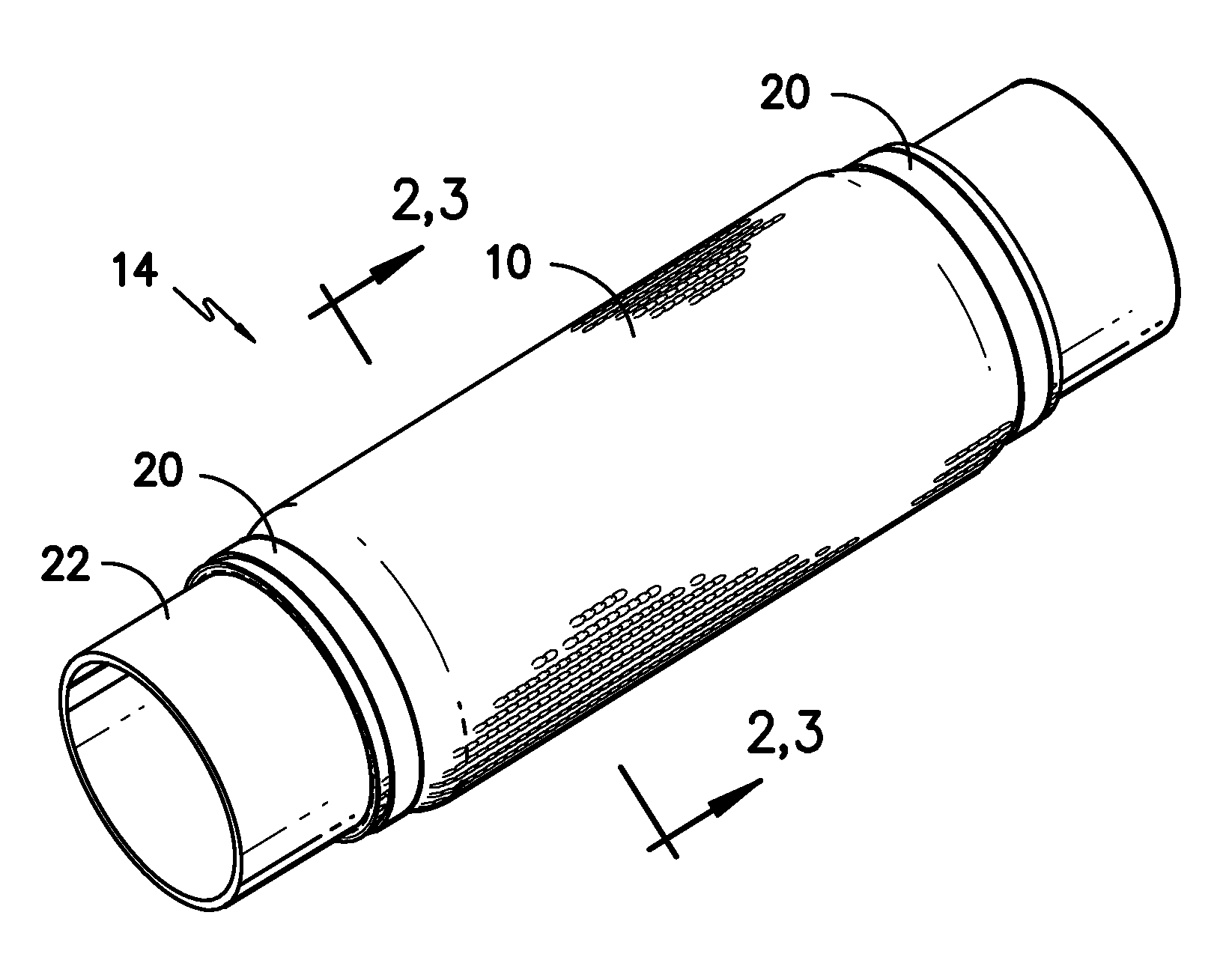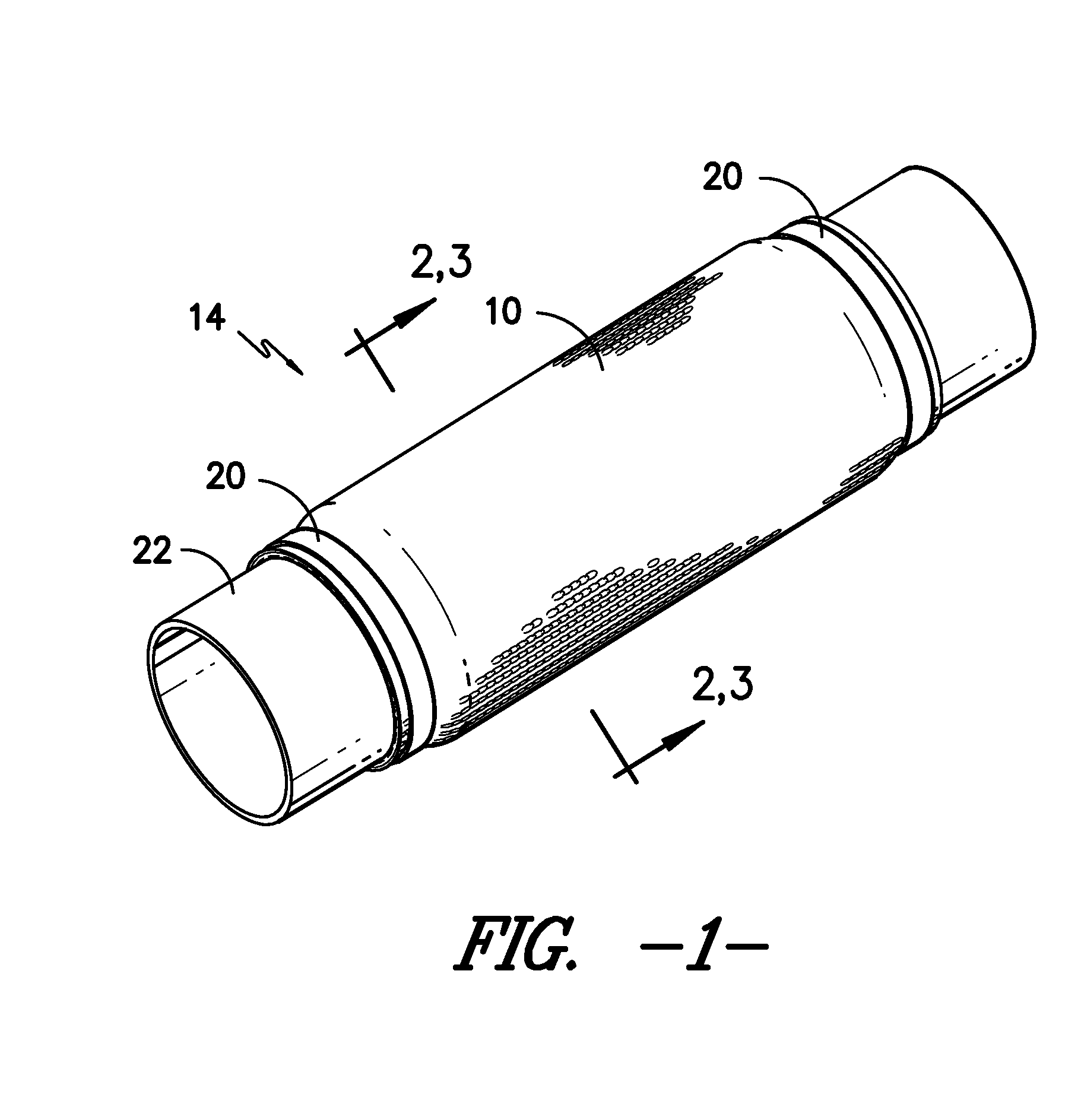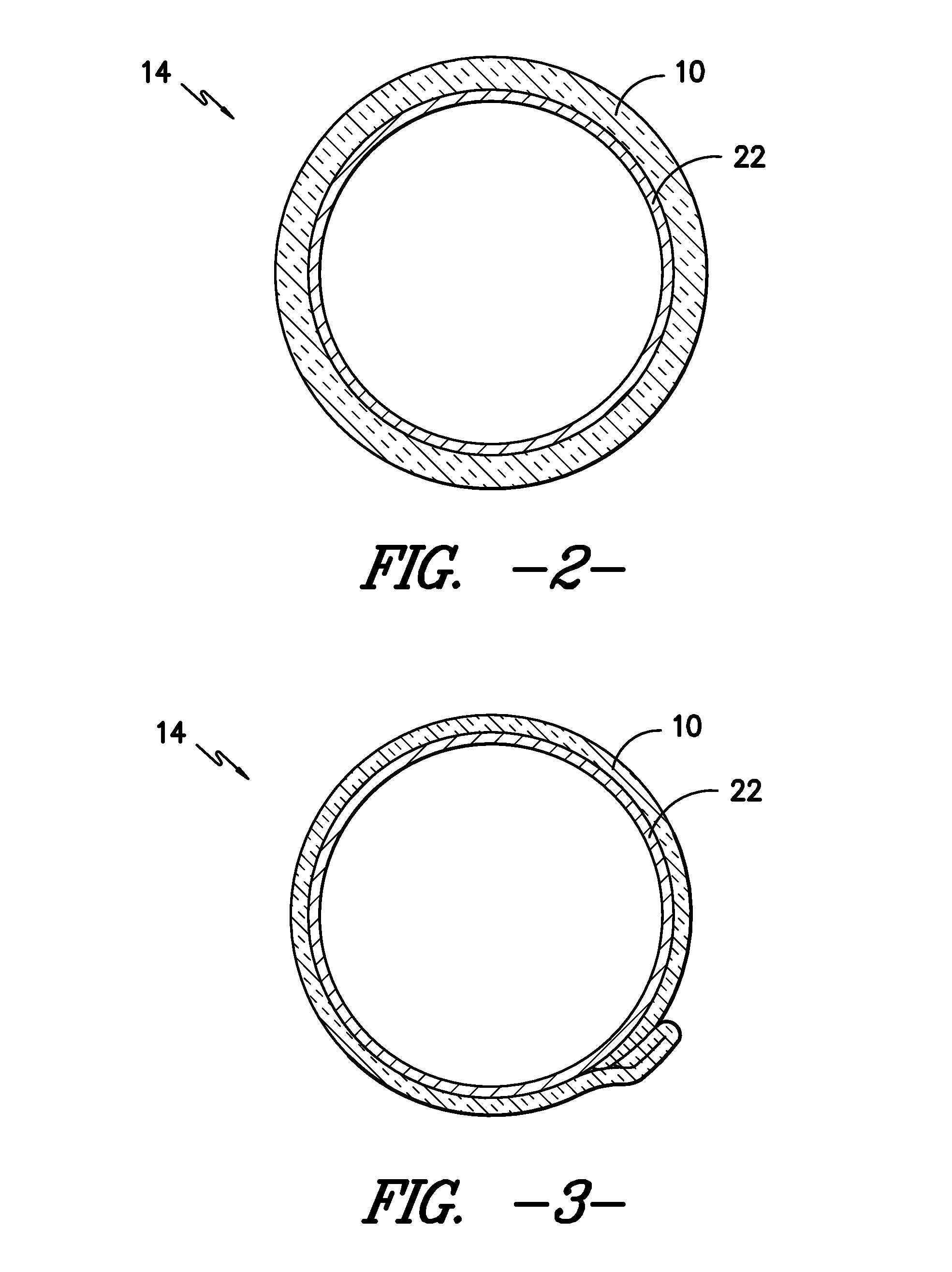Heat curable composite textile
a composite textile and heat-curable technology, applied in the field of heat-curable composite textile fabrics, can solve the problems of difficult flashing control, poor product consistency of compression molding, time-consuming and expensive manufacturing processes,
- Summary
- Abstract
- Description
- Claims
- Application Information
AI Technical Summary
Benefits of technology
Problems solved by technology
Method used
Image
Examples
first embodiment
[0014]The present invention includes, in a first embodiment, a heat curable, knitted fabric 10 containing yarn with a meltable resin outer layer, as well as optional reinforcing fibers, which can be cured to produce a more rigid material form that can be used to serve as a protective wrap or cover 14 for various types of mechanical or industrial components, or other similar applications. In one embodiment, the fabric 10 includes a core spun yarn 12. Typically, core spun yarn is a yarn consisting of an inner core yarn 16 surrounded by staple fibers. A core spun yarn 12 combines the strength and / or elongation of the core thread 16 and the characteristics of the staple fibers which form the outer surface, or the “wrap”18, as shown in FIG. 4. In the present case, the core spun yarn includes a core 16 preferably made from fibers of glass, carbon, basalt, aramid or metal. The meltable wrap 18 surrounding the core may include one or more of resin type fibers such as Poly(p-phenylene sulfid...
second embodiment
[0019]It is contemplated that multiple layers of the composite fabric 10 material may be used together. In one embodiment, the core spun yarns 12 of the first layer are made from the same material as the second layer, which may include core spun yarns 12 alone, or may further include reinforcing fibers. In the multi-layer composite textile, the core spun yarns 12 of the first layer may be formed of different material from the core spun yarns 12 of the second layer. In this way, the composite fabric 10 may be engineered to produce different features or characteristics, depending on the desired use thereof. Such characteristics may include melting point of the wraps, strength of the material, desired thickness, improved abrasion resistance, reduced cost, and improved environmental stability.
[0020]In another embodiment, a single layer knit fabric 10 is formed, wherein the yarns alternate between core spun yarn 12 and reinforcing yarn, such as glass, carbon, aramid or metal. In another ...
PUM
| Property | Measurement | Unit |
|---|---|---|
| Fraction | aaaaa | aaaaa |
| Fraction | aaaaa | aaaaa |
| Melting point | aaaaa | aaaaa |
Abstract
Description
Claims
Application Information
 Login to View More
Login to View More - R&D
- Intellectual Property
- Life Sciences
- Materials
- Tech Scout
- Unparalleled Data Quality
- Higher Quality Content
- 60% Fewer Hallucinations
Browse by: Latest US Patents, China's latest patents, Technical Efficacy Thesaurus, Application Domain, Technology Topic, Popular Technical Reports.
© 2025 PatSnap. All rights reserved.Legal|Privacy policy|Modern Slavery Act Transparency Statement|Sitemap|About US| Contact US: help@patsnap.com



